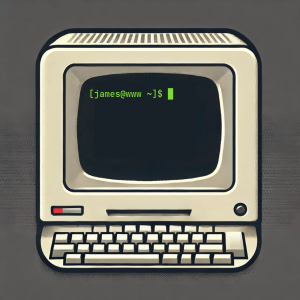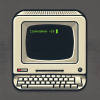In this exciting installment of Adventures in X11, we'll perform precise operations on our clipboard to generate desired output. So, pick up your instrument, and let's get to work!
In this case, of course, the instrument will be your keyboard. Strike the keys swiftly as you follow this worked example. You'll need a terminal emulator, TTY, or otherwise a virtual console in order to complete this mission.
First, install xsel.
Arch Linux:
sudo pacman -S xsel
The package will likely share the same name on Debian-based or RPM-based distributions.
Next, you'll need to exercise your bash scripting skills. Open a terminal, navigate to a directory, and create a file named clipboard-adventures.sh. I've created this file at ~/scripts.
The two options we'll be focusing on are -b and -o. -b tells xsel that we'll be operating on the clipboard, while -o outputs your current clipboard content to standard output. Standard output simply refers to the default location, usually the terminal, where output will be written. We can change this location in bash using various utilities to redirect the output somewhere else. Here is one way that we can use these options:
echo "copy this to the clipboard" | xsel -b
This command will copy the argument used for echo, which writes the subsequent content to standard output, to the clipboard. | (pipe), if you are not aware, is a pipe which directs echo's output into xsel. Chaining together commands like this in bash is incredibly common and very useful. Instead of echo writing to the terminal, which is the standard output in this instance, we redirect the output to the xsel command's standard input. Standard input is simply where a program receives input from. Think of it like connecting two pipes together; the standard output of echo connects to xsel's standard input. This is an important and useful concept to remember when working with bash.
Let's see a worked example of how what we've learned might be useful:
#! /bin/bash
echo "<details><summary>意味</summary>`xsel -bo`</details>" | xsel -b
There's a considerable amount going on here, so let's break it down.
We direct echo's output to xsel, which then directs it to our clipboard. echo first evaluates the string, and it then evaluates what is enclosed in the backticks (``) as an actual command as opposed to a string. xsel -bo outputs what is in the clipboard. Remember that -b tells xsel to operate on the clipboard, while -o writes to standard output.
After evaluating the enclosed command (which produces a string), we then pipe the output of echo to xsel -b, which then writes the resulting string to the clipboard.
My clipboard's content is now:
<details><summary>意味</summary>A word in Japanese that is used to reference the "meaning" of something.</details>
The reason is that my clipboard's content, before running this command, was "A word in Japanese that is used to reference the "meaning" of something." So, just like that, we can format the content of the clipboard by operating on it with xsel!
To use this script, we need to make it executable. Go to your terminal and execute chmod +x clipboard-adventures.sh. Every file has read/write/execute permissions for user/group/other. Explaining permission bits is beyond the scope of this article, but just know that by using chmod +x, we're allowing everyone to execute the script, which is what we want.
You could, alternatively, do this inside of your file manager if you can figure it out.
Now, whatever desktop environment you're using (I'm using GNOME), go to the keyboard shortcuts section and add a custom shortcut. You will be prompted to write a command in bash. Instead, fill in the absolute path of your script. Mine is /home/james/scripts/clipboard-adventures.sh. Add a keyboard shortcut, and you're done!
If you're not using a desktop environment, you can try xbindkeys, which works independently as long as you're using X11.

I have mapped this script to a keyboard shortcut so that I can quickly format clipboard content for use in Anki, but there are many other situations where formatting your clipboard content in a predetermined way is helpful.
Here's something else that I find regularly helpful—counting the words in your clipboard. While you could just use echo, paste the content of your clipboard, and pipe it to wc, that requires more user input and you also have to wait for the text to paste (which might take a long time, depending on how many words are in your clipboard).
There's a simpler way! Let's use xsel to accomplish this.
xsel -bo | wc -w
It's really that simple. If you just want to run this in a terminal now and then, you can alias this command to something easy to remember, like cbwc. But if it's something you use very regularly, why not map it to a keyboard shortcut and display the content in a notification on your desktop?
Here's how you would do that on GNOME and KDE, using notify-send:
#! /bin/bash
wc_num=$(xsel -bo | wc -w)
if [ $wc_num == 0 ]
then
notify-send "Word Count" "You don't have any words in your clipboard."
elif [ $wc_num == 1 ]
then
notify-send "Word Count" "You have $wc_num word in your clipboard."
else
notify-send "Word Count" "You have $wc_num words in your clipboard."
fi
Then, make it executable, and map it to a keyboard shortcut. I've chosen SUPER+SHIFT+W. And, just like that, you get a quick and easy way to get the word count of your clipboard:

Just for good measure, here's how you get the word count for your clipboard on macOS:
pbpaste | wc -w
macOS has pbcopy and pbpaste built-in, which are tools for operating on your clipboard. If you're running macOS, see what else you can do with them.
I advise reading the man page your distribution ships with this binary in order to get a better understanding of how to use xsel. There's not much more to it, but some options might be of interest to you.
If you're looking to do something more complex, xclip is more featureful.

